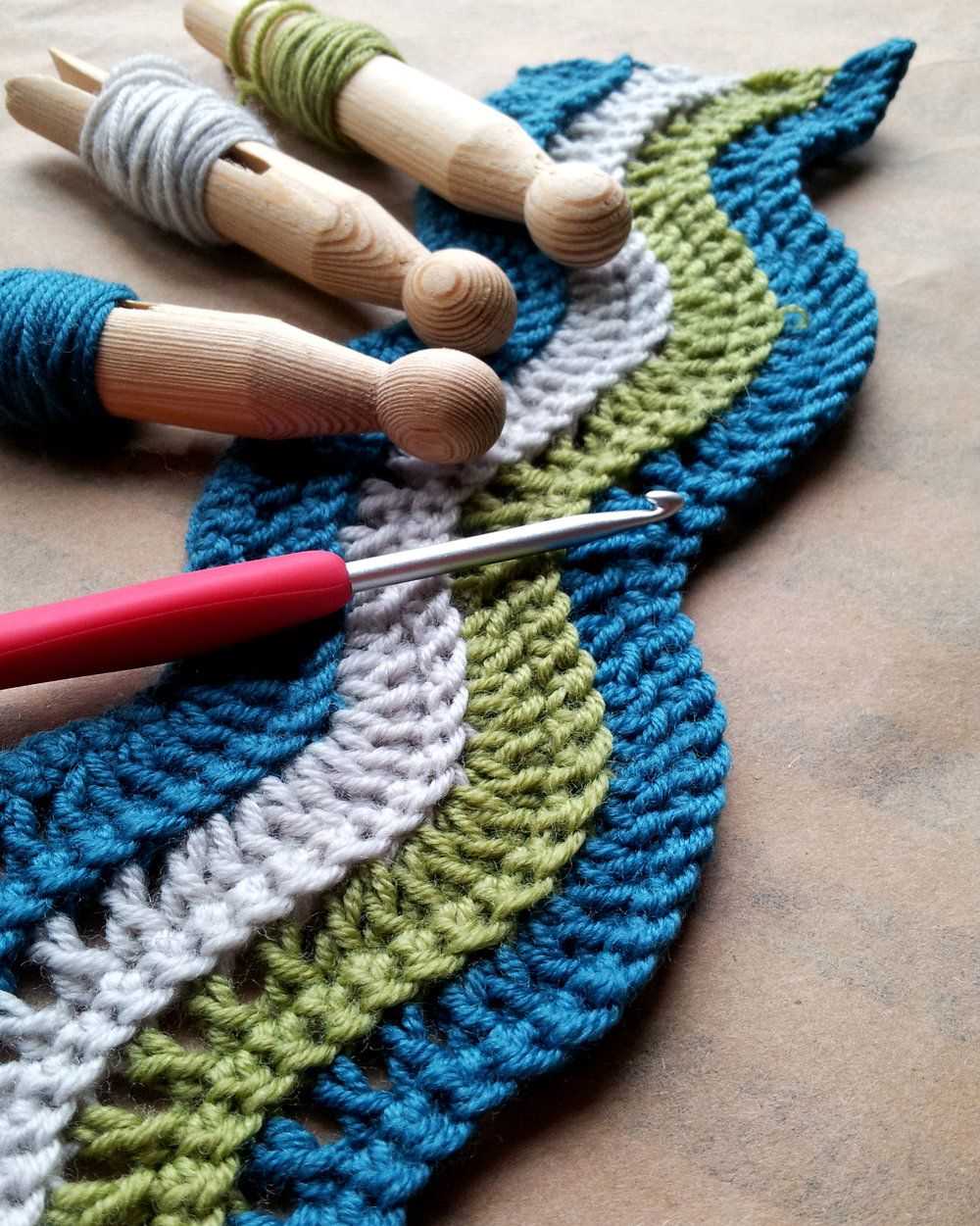
Colour work knitting, also known as stranded knitting or Fair Isle knitting, is a technique that involves working with multiple colours of yarn to create intricate and beautiful patterns. This technique is popular in many traditional knitting styles, such as Scandinavian and Shetland knitting, and is loved by knitters all over the world for its versatility and endless design possibilities.
One of the key elements of colour work knitting is creating patterns using two or more colours within the same row or round. This is achieved by carrying the unused yarn along the back of the work, while knitting with the working yarn. This creates floats of the non-working yarn on the wrong side of the fabric, resulting in a warm and thick fabric that is perfect for winter garments.
There are countless colour work knitting patterns available, ranging from simple geometric designs to more intricate motifs and images. These patterns can be incorporated into various knitting projects, such as sweaters, hats, mittens, and even blankets. With the right combination of colours and a bit of practice, you can create stunning and unique pieces that showcase your creativity.
Whether you’re a beginner or an experienced knitter, colour work knitting patterns offer a fun and rewarding challenge. They allow you to experiment with different colour combinations, techniques, and stitch patterns, while also providing an opportunity to further develop your knitting skills. So grab your needles and dive into the colourful world of colour work knitting!
How to Choose the Right Colours for Your Knitting Projects
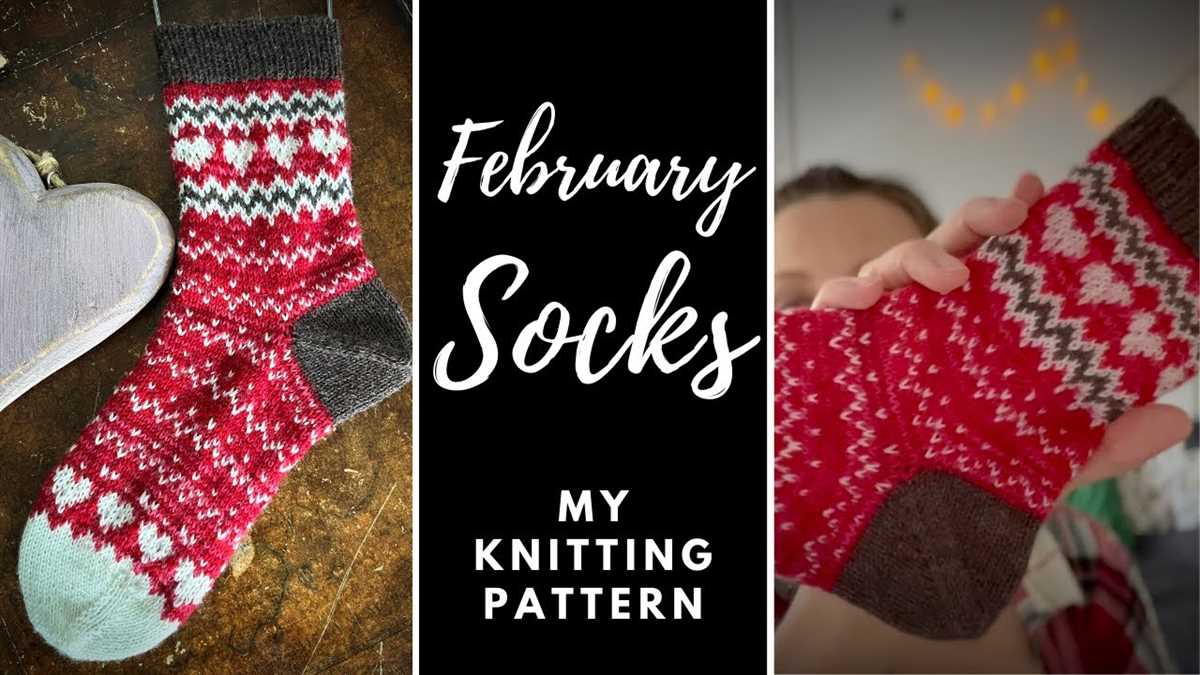
Choosing the right colours for your knitting projects can make a big difference in the overall look and feel of your finished piece. Whether you’re working on a sweater, scarf, or hat, here are some tips to help you make the best colour choices:
Consider the Purpose and Mood
Before you start selecting colours, think about the purpose and mood of your project. Are you knitting a cozy winter sweater or a fun, vibrant accessory? The purpose and desired mood can help guide your colour choices. Earth tones and deep, rich hues are often associated with warmth and comfort, while bright and bold colours can add a playful or energetic touch to your project.
Look for Inspiration
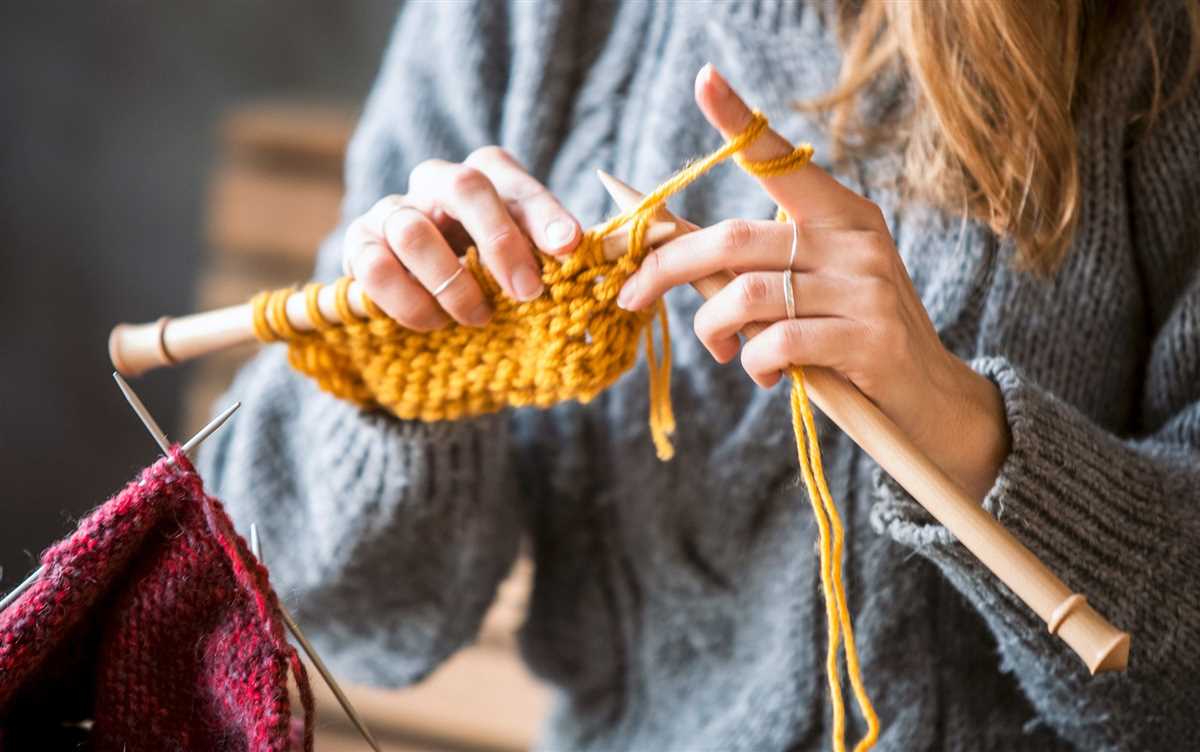
When it comes to choosing colours, inspiration can come from anywhere. Take a walk in nature or browse through magazines and websites for ideas. Look at colour combinations in paintings or photographs that catch your eye. Pay attention to how different colours work together and what emotions they evoke. You can also find inspiration in fashion and home decor trends to stay current and create a modern look.
Create a Colour Palette
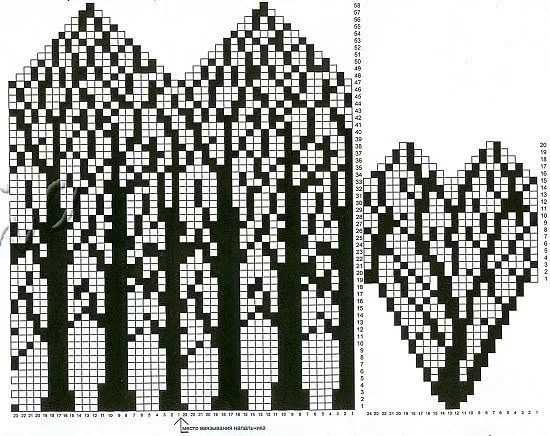
Once you have a general idea of the colours you want to incorporate, create a colour palette for your knitting project. Start with one or two main colours and then add complementary or contrasting shades to make your design pop. Consider using a colour wheel to help you find colours that will look harmonious together. Remember to also take into account the wearer’s complexion and personal style when selecting colours.
Test Your Colours
Before diving into your knitting project, it’s a good idea to test your colours to see how they look together. You can do this by using coloured pencils or markers to create a sketch of your design with the chosen colours. Another option is to create small swatches or samples using your chosen yarns to see how the colours interact. This will give you a better idea of how your finished project will look and allow you to make any necessary adjustments before starting.
In conclusion, choosing the right colours for your knitting projects is an important step in creating a visually appealing and enjoyable finished piece. By considering the purpose and mood, seeking inspiration, creating a colour palette, and testing your colours, you can ensure that your knitting project turns out exactly as you envisioned.
Essential Tips for Incorporating Colour into Your Knitting Patterns
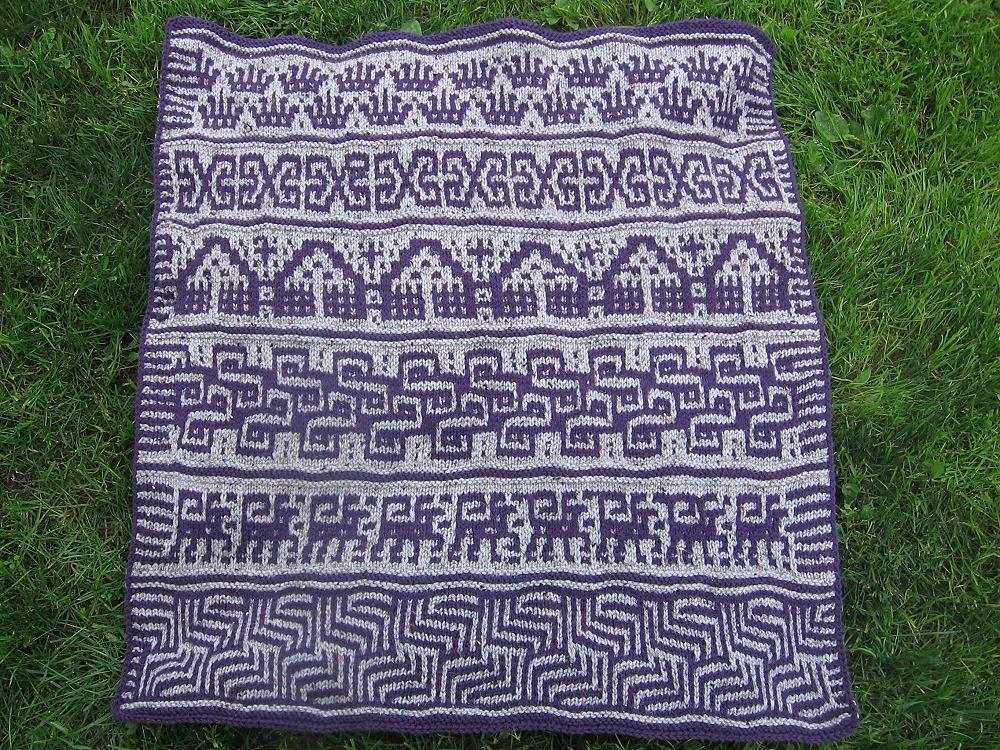
Are you looking to add a pop of color to your knitting projects? Incorporating color into your knitting patterns can elevate your finished piece and make it stand out. Here are some essential tips to help you successfully incorporate color into your knitting projects.
1. Choose the Right Yarn
When it comes to colorwork knitting, selecting the right yarn is crucial. Opt for yarns that have good stitch definition and a wide range of vibrant colors to choose from. Look for yarns that are specifically designed for colorwork or have a high-quality blend of fibers that will showcase the colors well.
2. Experiment with Color Combinations
Get creative with your color choices by experimenting with different combinations. You can create striking contrasts by pairing complementary colors or go for a more subtle look by using shades within the same color family. Use a color wheel or online resources to help you find color combinations that work well together.
3. Practice Stranded Knitting Techniques
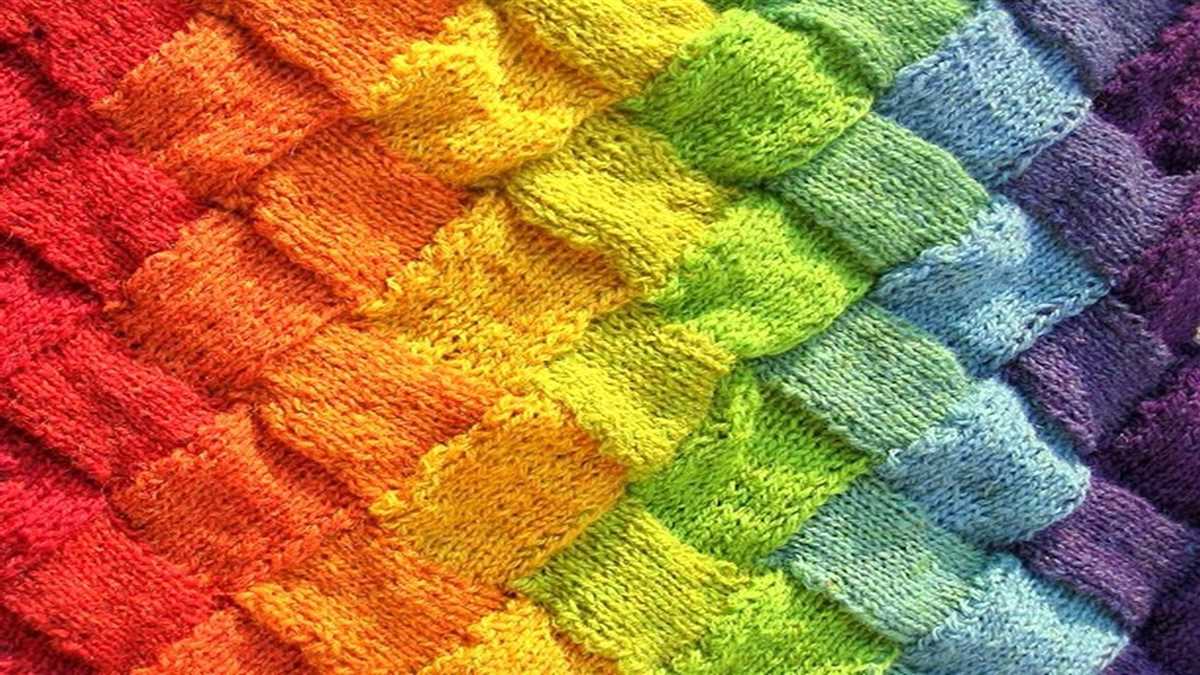
Stranded knitting, also known as Fair Isle knitting, is a popular technique used in colorwork. This technique involves working with two or more colors in the same row and carrying the unused color along the back of the work. Practice this technique to ensure even tension and avoid puckering or loose stitches.
4. Plan Your Color Placement

Before you start knitting, plan out your color placement. Think about how you want the colors to interact and create a balanced design. Consider the different areas of your pattern and how each color will enhance or highlight those areas. This will help you achieve a cohesive and visually appealing finished piece.
5. Use Stitch Patterns to Enhance the Colors
Make use of stitch patterns to enhance the colors in your knitting. Choose stitch patterns that allow the colors to shine and show off their unique qualities. For example, a simple stockinette stitch can showcase the variegated colors of a yarn, while a textured stitch pattern can add depth and dimension to your colorwork.
By following these essential tips, you can successfully incorporate color into your knitting patterns and create stunning and eye-catching pieces. Don’t be afraid to experiment and have fun with your color choices to create unique and beautiful designs.
Creating Stunning Effects with Knitting Colourwork Techniques
Colourwork knitting is a technique that allows knitters to create stunning effects by combining different colors of yarn in their projects. There are various colourwork techniques that can be used, including Fair Isle, stranded knitting, intarsia, and slip stitch. Each technique has its own unique characteristics and results in different patterns and textures.
Fair Isle knitting is perhaps the most well-known colourwork technique. It originated in the Fair Isle, a small island in Scotland, and is characterized by intricate patterns and motifs. In Fair Isle knitting, two or more colors are used in each row, and the unused colors are carried behind the work. This technique creates a beautiful and colorful fabric, with patterns that can range from simple stripes to complex designs.
Stranded knitting, also known as Norwegian knitting or two-color knitting, is another popular colourwork technique. In stranded knitting, two or more colors are used in each row, but unlike Fair Isle knitting, the unused colors are not carried behind the work. Instead, they are stranded across the back of the knitting, creating a float or “stranded” effect. This technique allows for more intricate patterns and designs, as the knitter can easily switch between colors.
Intarsia is a colourwork technique that involves using separate strands of yarn for each section of color. Unlike Fair Isle and stranded knitting, where the colors are carried across the work, intarsia requires the knitter to twist the yarns at the color change to prevent holes from forming. This technique is often used to create large, bold designs, such as animals or geometric patterns.
Slip stitch colourwork, also known as mosaic knitting, is a technique that creates an illusion of colorwork by slipping stitches instead of working with multiple strands of yarn. By slipping stitches and working only with one color at a time, intricate patterns can be created without the complexity of Fair Isle or stranded knitting. This technique is perfect for beginners or knitters who prefer a simpler approach to colourwork.
Whether you choose to create a Fair Isle sweater, a stranded hat, an intarsia blanket, or a slip stitch scarf, colourwork knitting offers endless possibilities for creating stunning effects. Experiment with different techniques, play with color combinations, and let your creativity shine through your knitting projects. With the right techniques and a little bit of practice, you can achieve beautiful and eye-catching results that will impress everyone who sees your work.
Exploring Different Types of Colourwork Knitting Patterns
Colourwork knitting patterns are a popular choice for knitters who want to add vibrant, eye-catching designs to their projects. There are several types of colourwork patterns to choose from, each offering its own unique style and technique. Whether you’re a beginner or an experienced knitter, these patterns can provide a fun and rewarding challenge.
Fair Isle Knitting: Fair Isle knitting is a traditional technique that originated in the Fair Isle of Scotland. It involves using two or more colors in a row to create intricate and colorful patterns. The patterns typically consist of small geometric shapes, which are repeated throughout the project. Fair Isle knitting requires concentration and careful tension control to ensure that the colors are evenly distributed and the stitches are not too tight or too loose.
Intarsia Knitting:
Intarsia knitting is a technique that involves knitting with blocks of color to create large, distinct patterns. Unlike Fair Isle knitting, where the colors are carried along the entire row, in intarsia knitting, each block of color has its own separate skein or bobbin of yarn. The yarn is joined at the beginning and end of each block, creating clean, crisp lines between colors. Intarsia knitting is a great way to create pictures or motifs in your knitting, as the blocks of color can be arranged to form intricate designs.
Slip Stitch Knitting:
Slip stitch knitting is a technique that creates the appearance of complex colorwork patterns using simple knitting stitches. Instead of working with multiple colors in a row, slip stitch patterns involve slipping stitches from previous rows to create the illusion of color changes. This technique is often used to create textured designs, such as mosaic or tweed patterns. Slip stitch knitting is a great option for beginners who want to try their hand at colorwork without the complexity of Fair Isle or intarsia knitting.
In conclusion, exploring different types of colourwork knitting patterns can be a fun and rewarding experience for knitters of all skill levels. Whether you choose to try the intricate patterns of Fair Isle knitting, the blocky designs of intarsia knitting, or the illusionary effects of slip stitch knitting, colourwork can add a whole new dimension to your knitting projects.
Choosing the Perfect Yarn for Your Colourwork Knitting Project
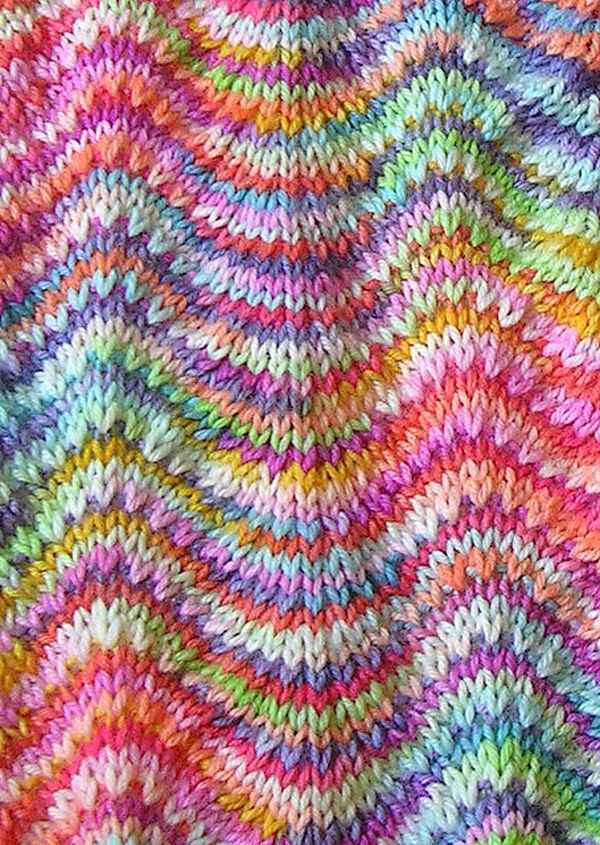
When it comes to colourwork knitting, choosing the right yarn is crucial to the success of your project. The yarn you select will not only affect the overall appearance of your finished piece but also impact its durability and ease of care. Here are a few key factors to consider when choosing the perfect yarn for your colourwork knitting project.
Fiber Content:
The fiber content of your yarn can greatly influence the outcome of your colourwork project. Different fibers have different properties, such as warmth, drape, and elasticity, which can affect the stitch definition and overall appearance of your design. Wool, for example, is a popular choice for colourwork knitting due to its natural elasticity and ability to hold color well. Other fibers, such as alpaca or silk, may provide a different look and feel to your project. It is essential to consider the characteristics of the fiber and how they will complement your desired design.
Weight:
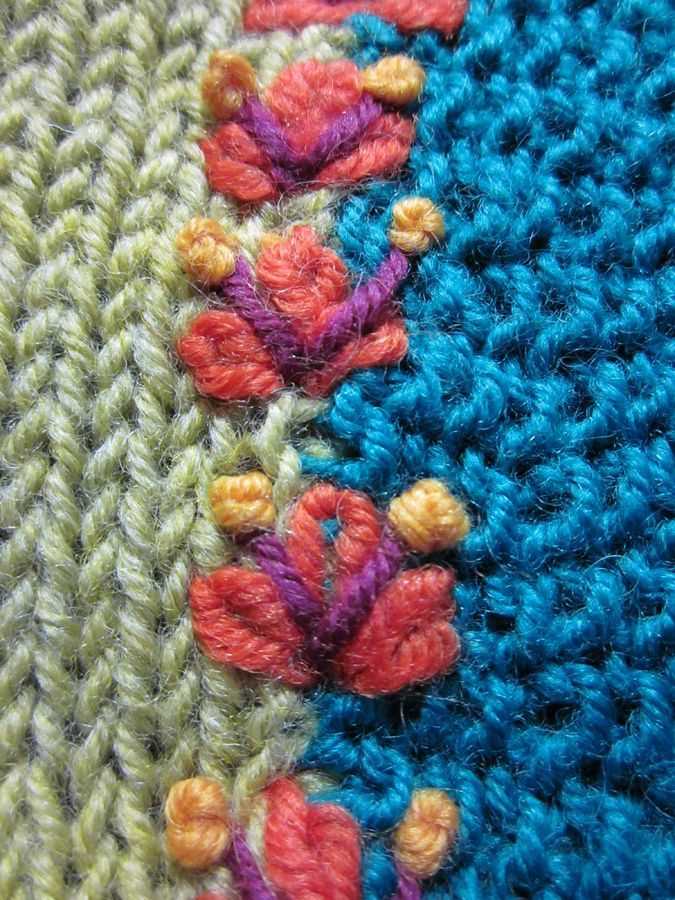
The weight, or thickness, of your yarn is another important factor to consider. Colourwork knitting often requires working with multiple strands of yarn, so selecting a yarn that is of the appropriate weight for your project is crucial. Bulky yarns can create a dense and cozy fabric, while lighter weight yarns offer more drape and delicate stitch definition. Additionally, it is essential to ensure that the weight of your chosen yarn is compatible with the patterns and stitches you plan to use in your colourwork design.
Color Palette:
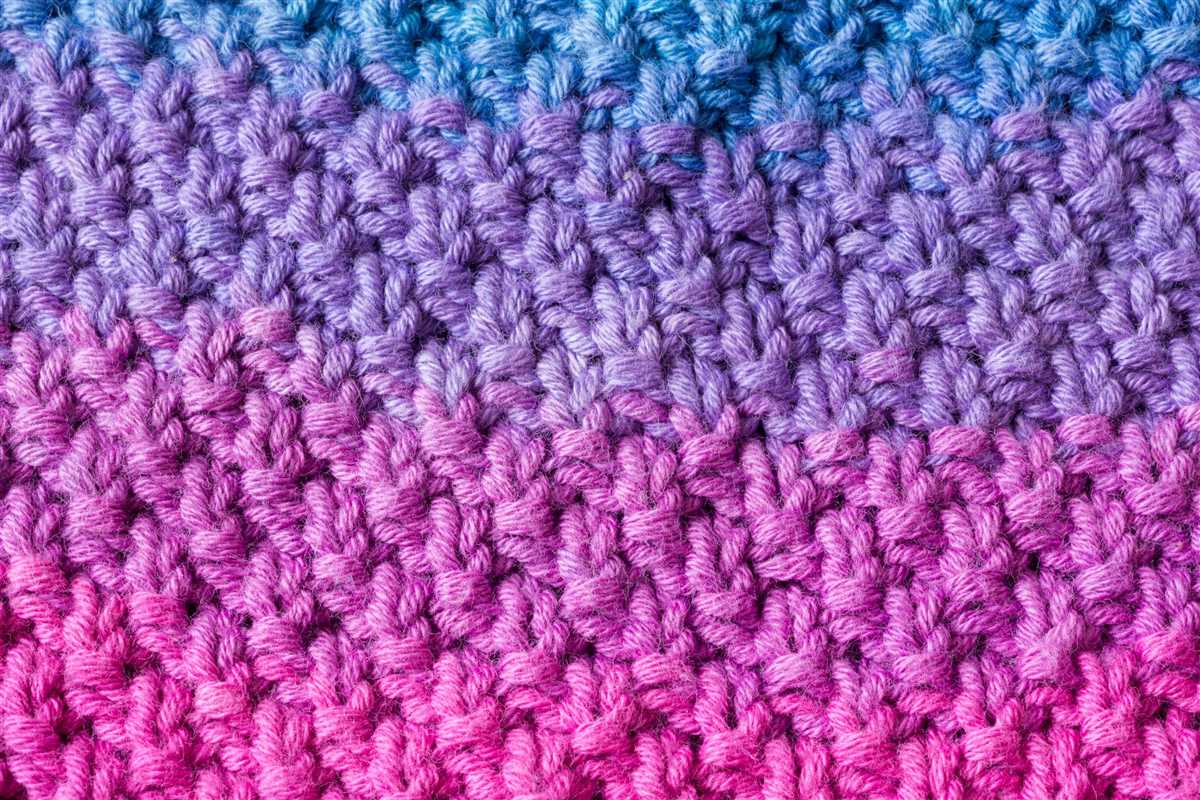
Of course, the colour palette of your yarn is of utmost importance in colourwork knitting. It is advisable to select a yarn that offers a wide range of colours to allow for the creation of intricate and striking patterns. Consider whether you prefer a bold and vibrant colour scheme or a more subtle and muted palette. Additionally, think about how the colours you choose will interact with each other in your design, ensuring they complement and contrast in a pleasing manner.
By considering the fiber content, weight, and colour palette of your yarn, you can ensure that you choose the perfect yarn for your colourwork knitting project. Taking the time to make an informed decision will help you achieve a finished piece that is not only visually stunning but also durable and long-lasting.
Step-by-Step Guide to Knitting Fair Isle Patterns
Knitting Fair Isle patterns is a popular technique that involves using multiple colors of yarn to create intricate and beautiful designs. If you’re new to Fair Isle knitting, don’t worry! With a step-by-step guide, you’ll be able to create stunning colorwork projects in no time.
Choose Your Yarn and Needles
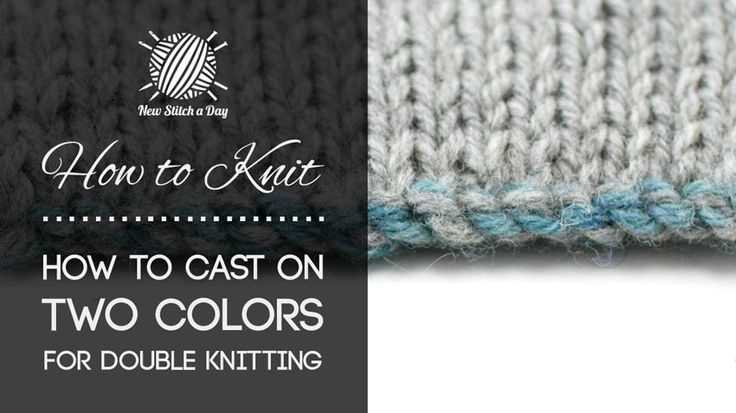
The first step in knitting Fair Isle patterns is selecting your yarn and needles. It’s important to choose a yarn that is suitable for colorwork, such as a lightweight wool or a blend of wool and acrylic. You’ll also need two different colors of yarn to create the contrasting design. As for needles, a set of double-pointed or circular needles in the appropriate size for your yarn will work best.
Practice Stranded Knitting
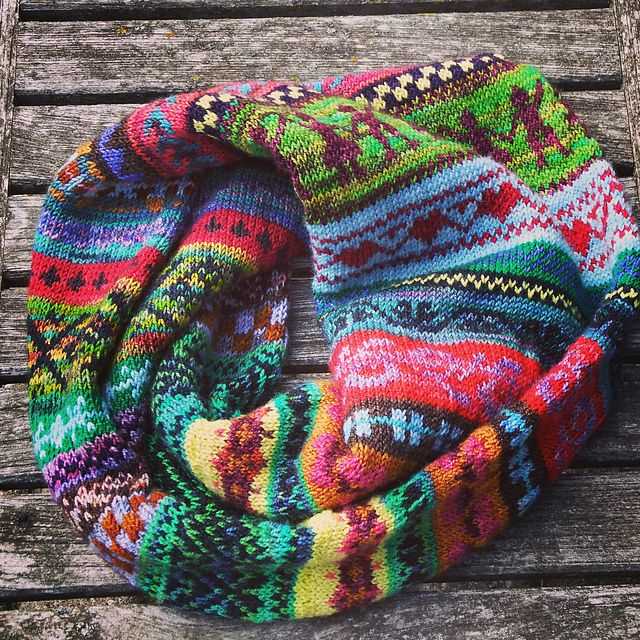
Fair Isle knitting involves a technique called stranded knitting, where you carry two colors of yarn across each row. It’s essential to practice this technique before starting your project to ensure even tension and an even fabric. Start by knitting a swatch using your chosen colors, making sure to strand the unused color behind your work as you go.
Start with a simple design or pattern, using only two colors, to get the hang of stranded knitting. Pay attention to your tension and any tension issues between the colors. Practice until you feel comfortable and confident in your stranded knitting skills.
Read and Follow the Pattern
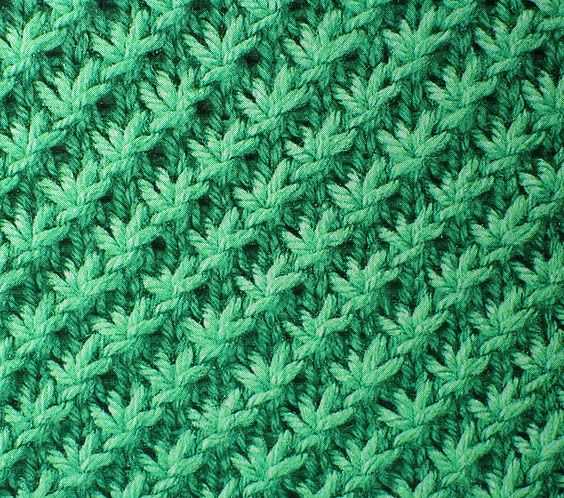
When you’re ready to start your Fair Isle project, it’s important to carefully read and understand the pattern instructions. Fair Isle patterns are typically charted, with each square on the chart representing a stitch and each color represented by a different symbol or color. Take your time to familiarize yourself with the chart and any abbreviations or special techniques mentioned in the pattern.
- Use a highlighter or pencil to mark your place on the chart as you work through each row.
- Start with a small, manageable project, such as a hat or a cowl, to build your confidence and skills.
- Remember to carry the unused color behind your work, catching it every few stitches to prevent long floats on the wrong side of your project.
Block and Finish Your Project
Once you’ve completed your Fair Isle project, it’s important to block it to even out any uneven tension and to help the fabric relax and take its final shape. Follow the blocking instructions specific to your yarn and project to achieve the best results.
After blocking, weave in any loose ends and finish off your project as desired, whether it’s adding a lining to a hat or attaching a button to a cardigan. Admire your beautiful Fair Isle creation and start planning your next colorwork knitting project!
Unlocking the Magic of Intarsia Knitting
Intarsia knitting is a technique that allows you to create beautiful designs and patterns using multiple colors of yarn. Unlike stranded knitting, where you carry the yarn across the back of the work, intarsia involves using separate balls or bobbins of yarn for each color block. This technique gives you the freedom to create intricate and detailed images, allowing you to unleash your creativity and bring unique designs to life.
One of the key benefits of intarsia knitting is the ability to create sharp and defined color changes. By using separate balls of yarn for each color block, you can ensure that the colors remain distinct and don’t blend together. This makes intarsia particularly well-suited for designs with bold geometric shapes or intricate motifs.
To get started with intarsia knitting, you’ll need to familiarize yourself with some basic techniques. First, you’ll need to know how to create a yarn bobble or butterfly to manage your yarn ends. This involves wrapping the yarn around your fingers to create a small bundle or bobble, which can then be easily picked up when you’re ready to change colors.
Next, you’ll need to learn how to join new colors of yarn. This is done by overlapping the old and new yarns for a few stitches and then continuing to knit with the new yarn. By securing the yarns in this way, you can create clean and neat color transitions.
Once you’ve mastered these techniques, you can start experimenting with different intarsia patterns. You can create anything from simple geometric shapes to intricate images, such as flowers, animals, or even landscapes. The possibilities are truly endless.
Whether you’re a beginner or an experienced knitter, intarsia knitting can offer a whole new world of creative possibilities. With its sharp color changes and intricate design potential, this technique allows you to bring your knitting projects to the next level. So dive in, unlock the magic of intarsia knitting, and let your imagination run wild.
Making a Statement with Stranded Colourwork Knitting
Stranded colourwork knitting is a technique that allows you to create stunning patterns and designs by using multiple colours in a single row. This traditional technique, also known as Fair Isle knitting, can be used to make a bold statement in your knitting projects.
One of the key elements of stranded colourwork knitting is the use of two or more colours in a row. This allows you to create intricate and eye-catching patterns, ranging from geometric designs to floral motifs. The contrast between the different colours can create a striking visual effect and make your knitting project stand out.
When working with stranded colourwork knitting, it’s important to pay attention to your tension. The floats, which are the strands of yarn that are carried across the back of your work, should not be too loose or too tight. By maintaining an even tension, you can ensure that your colourwork knitting is neat and professional-looking.
The possibilities with stranded colourwork knitting are endless. You can use bold and vibrant colours to create a statement piece, or opt for more subtle shades for a more understated design. Whichever colours you choose, the key is to have fun and experiment with different patterns and combinations.
Tips for Stranded Colourwork Knitting:
- Choose colours that have good contrast to create a visual impact.
- Practice your tension and find a comfortable knitting style.
- Start with simple patterns before attempting more complex designs.
- Use a swatch to test your tension and gauge before starting your project.
- Consider blocking your finished project to even out the stitches and enhance the colours.
- Experiment with different yarn weights and needle sizes to create different effects.
Stylish and Modern Colourwork Knitting Ideas and Inspiration
Colourwork knitting is a popular technique that adds a beautiful dimension to any knit project. With the right combination of colors and patterns, you can create stunning designs that are both stylish and modern. Whether you’re a beginner or an experienced knitter, there are plenty of colourwork knitting ideas and inspiration to help you create your next project.
One popular trend in modern colourwork knitting is the use of bold and vibrant colors. Instead of sticking to traditional color palettes, many knitters are embracing bright and unexpected combinations. This allows for more creativity and gives a fresh and contemporary look to your finished knits. Some popular color combinations include pink and yellow, teal and orange, and purple and green.
When it comes to patterns, geometric designs are very popular in modern colourwork knitting. Stripes, chevrons, and geometric shapes create a clean and minimalist look. These patterns can be achieved using stranded knitting or intarsia techniques. Stranded knitting involves carrying multiple colors across the back of your work, while intarsia involves knitting separate blocks of color.
For those looking for a more intricate challenge, fair isle knitting is a great option. Fair isle knitting involves knitting with multiple colors in a single row, creating detailed and intricate patterns. This technique is perfect for creating beautiful landscapes, animal motifs, or intricate floral designs. Fair isle knitting requires precision and attention to detail, but the end result is worth the effort.
In conclusion, the world of colourwork knitting is vast and filled with endless possibilities. Whether you prefer bold and vibrant colors or intricate patterns, there is a style and design out there for you. Don’t be afraid to experiment and let your creativity soar. With the right inspiration and ideas, you can create stylish and modern colourwork knits that will be the envy of all your knitting friends.
Working with Variegated Yarn in Colourwork Knitting
Colourwork knitting is a popular technique that adds visual interest and depth to knitted projects. When working with variegated yarn in colourwork knitting, there are a few things to consider to ensure the best results.
Choose the Right Pattern: When selecting a pattern for colourwork knitting with variegated yarn, it’s important to choose a design that will showcase the yarn’s unique colour changes. Look for patterns with simple motifs or stitch patterns that won’t compete with the yarn’s variegation.
Pair with a Solid Color: To make the variegated yarn stand out, consider pairing it with a solid color yarn. The solid color can be used for the background or for certain elements of the design, allowing the variegated yarn to take center stage.
Swatch and Experiment: Before diving into a project, it’s a good idea to swatch with the variegated yarn and test different stitch patterns and colour combinations. This will help you determine how the yarn behaves and how the colours interact with each other. It will also give you an idea of the gauge and how the variegated yarn looks in the chosen pattern.
Consider the Project Type: Variegated yarn can be used in a variety of knitting projects, such as hats, scarves, sweaters, and blankets. However, certain project types may be more suited to showcasing the variegation. For example, a simple hat pattern with a repeating motif will allow the variegated yarn to shine, while a complex lace pattern may obscure the colours.
Embrace the Unpredictability: Variegated yarn can create beautiful and unexpected results in colourwork knitting. Sometimes the colours may blend together in interesting ways, while other times they may create bold and contrasting patterns. Embrace the unpredictable nature of variegated yarn and let it guide your creativity.
Working with variegated yarn in colourwork knitting can be a fun and rewarding experience. By choosing the right pattern, pairing it with a solid color, swatching and experimenting, considering the project type, and embracing the yarn’s unpredictability, you can create stunning and unique knitted projects that showcase the beauty of variegated yarn.
Troubleshooting Common Issues in Colourwork Knitting
Colourwork knitting is a technique that involves working with multiple colors in a single row or round. While it can produce stunning results, it can also be challenging, especially for beginners. Here are some common issues that may arise in colourwork knitting and how to troubleshoot them:
Mismatched Tension
One of the most common problems in colourwork knitting is mismatched tension between different colors. This can result in uneven stitches and an overall sloppy appearance. To avoid this, it’s important to maintain consistent tension while working with different colors. One way to achieve this is to hold both colors in your hand at the same time and adjust the tension accordingly. Alternatively, you can try using different knitting needles for each color to help control the tension.
Floating Yarn
In colourwork knitting, it’s common to “float” the non-working yarn behind the stitches to be used later. However, long floats can easily get caught or snagged, resulting in a distorted fabric. To prevent this, make sure to carry the non-working yarn loosely behind the stitches, ensuring that it is not too tight or too loose. You can also use a technique called “catching” to secure long floats by catching the non-working yarn with the working yarn every few stitches.
Inconsistent Color Dominance
Another common issue in colourwork knitting is inconsistent color dominance. Color dominance refers to the visual prominence of one color over another. If color dominance is inconsistent, the colorwork pattern may look uneven or distorted. To ensure consistent color dominance, make sure to always hold the dominant color (typically a darker color) above the other color(s) when working the stitches. Practice and experimenting with different techniques can help you achieve a desired outcome.
Jog in the Round
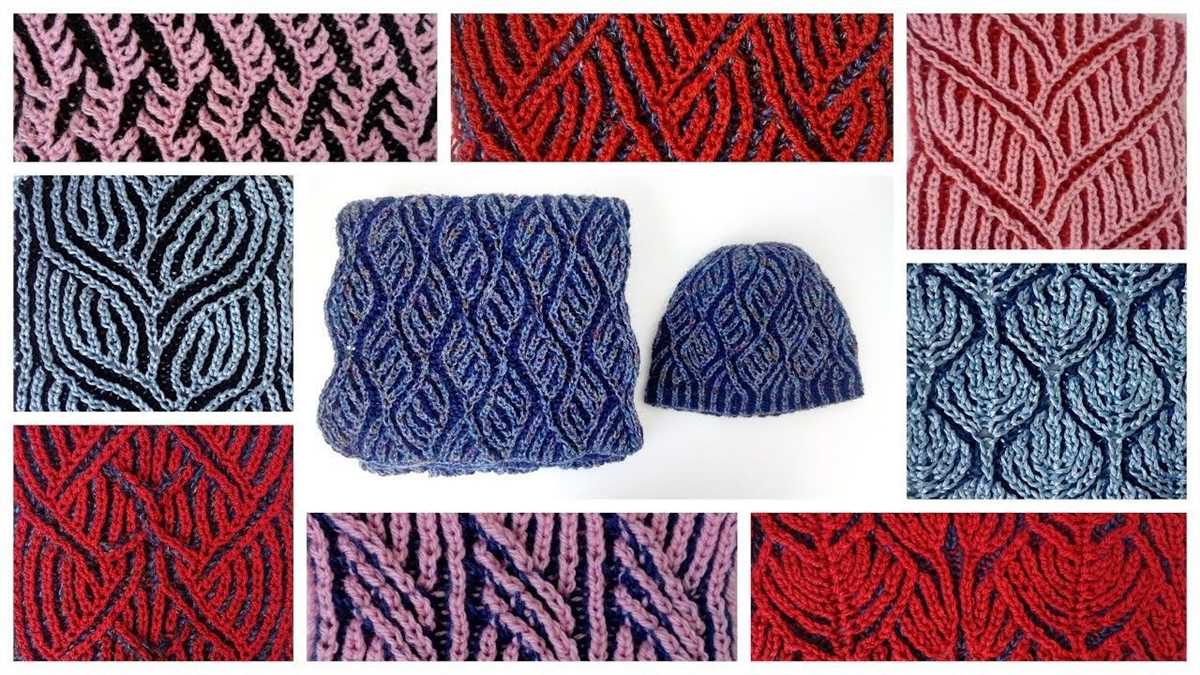
When knitting in the round, it’s common to encounter a visible jog or step in the colorwork pattern at the beginning of each round. To minimize this jog, you can try a technique called “jogless jog.” This involves slipping the first stitch of the new round and adjusting the tension of the yarn to blend the colors smoothly. Additionally, you can also try adding a single-stitch jogless jog by knitting into the stitch below the first stitch of the new round to create a smoother transition.
In conclusion, while colourwork knitting can be challenging, troubleshooting common issues can help you achieve beautiful and flawless results. With practice and patience, you can master this technique and create stunning colorwork projects.
Finishing Touches: Blocking and Caring for Your Colourwork Knitting
After putting in all the hard work of knitting your colourwork project, it’s important to give it the finishing touches it deserves. Blocking is a crucial step in bringing out the full beauty and potential of your knitted piece, while proper care ensures its longevity. Here are some tips for blocking and caring for your colourwork knitting:
Blocking Your Colourwork Knitting
Blocking is the process of gently shaping and stretching your knitted piece to achieve the desired measurements and even tension. This step is especially important for colourwork projects, as it helps to even out any irregularities and open up the stitches, showcasing the detailed patterns.
Here’s a simple guide to blocking your colourwork knitting:
- Fill a basin or sink with lukewarm water and add a delicate wool wash or mild detergent.
- Immerse your knitted piece in the water, gently squeezing out any air bubbles and ensuring it is fully submerged.
- Let the knitting soak for about 15-20 minutes, or until it is fully saturated.
- Gently squeeze out the excess water and avoid wringing or twisting the fabric.
- Lay the piece flat on a clean, dry towel and gently roll it up to remove any remaining water.
- Pin the knitting to shape, using rustproof pins, and smooth out any wrinkles or puckering.
- Leave the knitting to dry completely, preferably on a flat surface away from direct heat or sunlight.
Caring for Your Colourwork Knitting
Proper care is essential to maintain the vibrancy and integrity of your colourwork knitting over time. By following these guidelines, you can ensure that your knitted piece stays in great condition:
- Always read the care instructions provided with the yarn and follow them accordingly.
- Hand wash your colourwork knits whenever possible, using a gentle wool wash or mild detergent. Avoid using harsh chemicals or bleach.
- When washing, turn the garment inside out to protect the colourful side and prevent excessive friction.
- Never hang your colourwork knitting while wet, as it can stretch and lose its shape. Instead, lay it flat to dry.
- Avoid storing your knitted piece in direct sunlight or in damp areas to prevent fading and mildew.
- If your colourwork knitting develops pilling, gently remove it with a fabric shaver or sweater stone.
- Consider storing your colourwork knits folded rather than hung to prevent stretching and distortion.
By taking the time to block and care for your colourwork knitting, you can enjoy it for years to come. These finishing touches will enhance the beauty of your projects and ensure that your hard work pays off in the long run. Happy knitting!